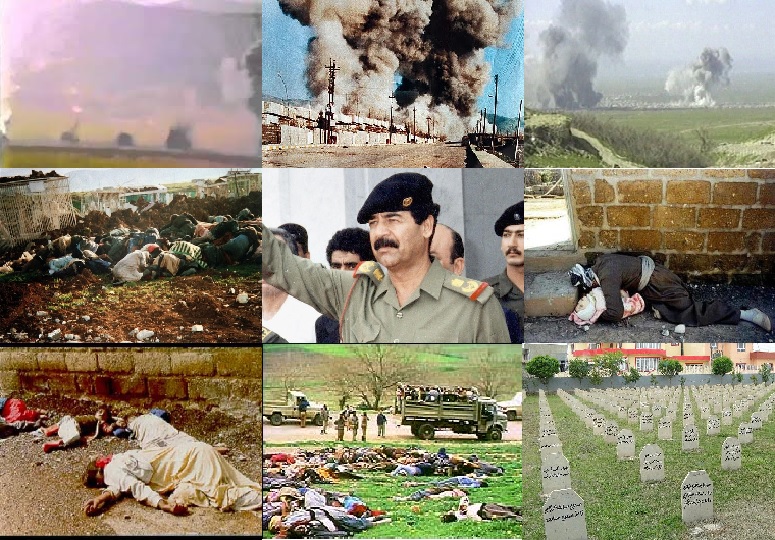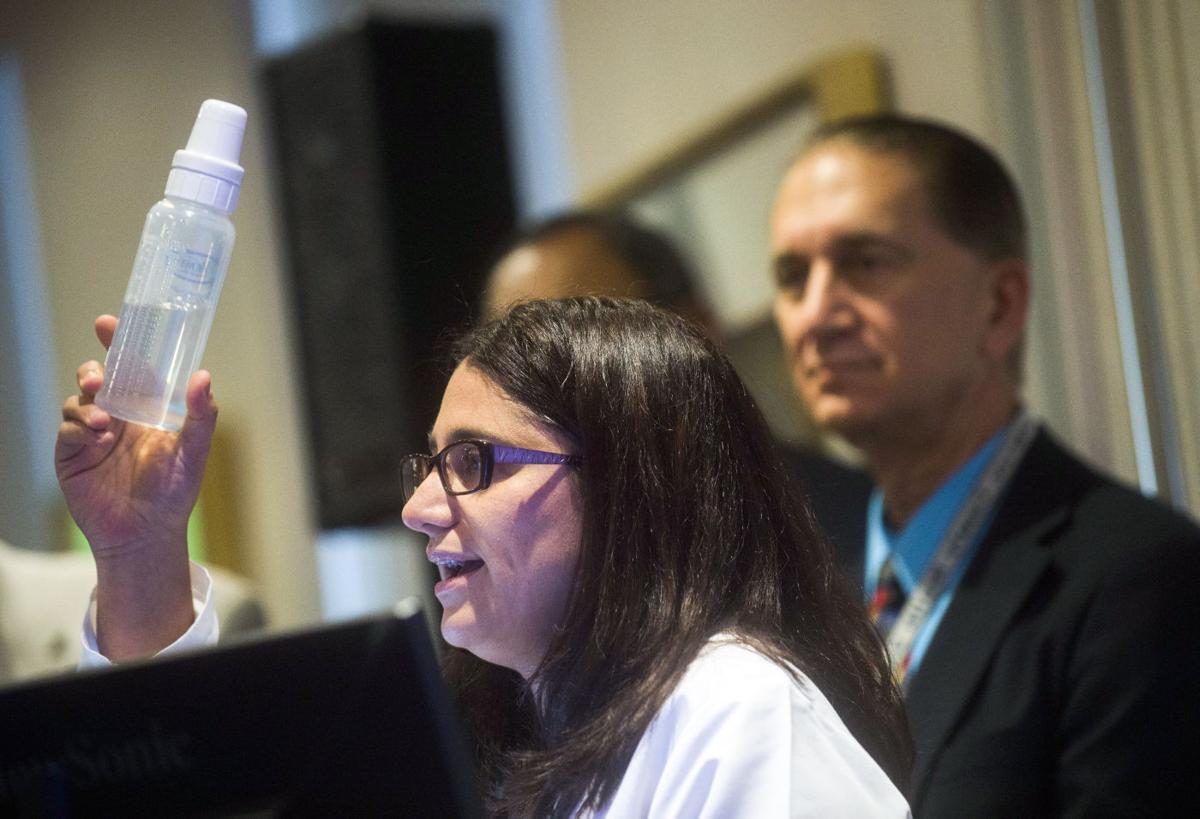
Analysis of Dr. Mona Hanna-Attisha’s ‘What The Eyes Don’t See’
Chapter 16- ShortWave Radio Crackling
Vocabulary:
- International Brigades
- Association Against Imperialism and Fascism
- Nuri Rufail Koutani
- borderless, progressive cause
- political activism
- Saddam Hussein
- genocidal massacre
- injustice
1.) Mona’s dad, Jidu, was fascinated by ancestral history, and learned a great deal about her mother’s distant relative, Nuri Rufail Koutani.
—> Nuri was a 1930s revolutionary who originally studied railway engineering but was kicked out of school due to his political activism.
—> Nuri founded the Association Against Imperialism and Fascism, which called for independence against colonialism. Nuri signed its manifesto, an act similar to signing the American Declaration of Independence.
—> Later in life, Nuri joined the International Brigades, and was one of two Iraqis in the group of 35,000. He continued to fight imperialism and fascism, even
after being brutally imprisoned.
2.) Saddam Hussein and the terror of the Ba’athist regime forced Mona’s family out of Iraq. This caused:
—> Mona’s father to engage in activism from halfway across the wrold, trying to wake up the political leaders of the U.S. from their obsession with Iraq (which they held due to its oil) so that they could see Saddam Hussein’s true nature, and stop providing him with high-tech equipment for chemical weapons.
—> When she was a child, Mona’s father showed her pictures from the genocidal massacre in Iraq, the largest chemical weapons attack directed against a civilian population in history.
—> Mona lost any naïvete she had, and learned that “challenging injustice means standing up for the weak, the abused the forgotten- be it in health, employment, education or the environment. It means being vigilant on behalf of people who are treated as pariahs and scapegoats, populations that are dehumanized, displaced, and treated as disposable. It means fighting oppression
at every opportunity- no matter the place of country” (Hanna-Attisha, 220).

Chapter 17: Meeting The Mayor
Summary:1.) Mona set up a meeting with the mayor, Dayne Walling, hopeful that he would issue a public health advisory in Flint. She was hopeful that she would succeed in convincing him to do so, and to stand with them when they made the information from the study public, because:
—> Walling was a Flint native, raising kids in Flint
—> If a public health crisis happened on his watch and he didn’t address it, he could lose his bid for re-election.
—> the results of the intense study Mona and Jenny had completed, with horrifying, powerful, compelling data
—> personal stories to drive the point home, appealing to the emotional response of the presentee
—> citing facts from other studies about the effects of lead on the body, particularly in children
—> reiterating federal action levels for lead and the legal ramifications of not complying
—> the mayor refused to make a decision immediately about making the announcement and standing with Mona’s group in their efforts to mitigate the crisis, so Mona gave him two days to give a definite answer
—> the city manager and head of public works repeated the same lies developed by the MDEQ
—> Mona was challenged to let go of any partisanship in her advocacy, partnership, and friendship with Marc.
—> Mona acknowledged that she felt that someone’s political stance mattered- because we have to stand up and live all the good things we believe in; otherwise they’re pointless. “Progressives didn’t have a monopoly on integrity or caring about people” (Hanna-Attisha 235-236). This idea was in alignment with her progressive political stance, and she felt that if someone else wanted to live this same belief, their political stance needed to be in alignment with this.
—> Mona realized that in the greater scope, what mattered wasn’t politics or political philosophy- it was Flint kids, and that was ground she was willing to stand on with anybody.
Chapter 18: Aeb
Ideas:
In Arabic culture, there is the concept ‘aeb’, something difficult to describe because the word ‘shame,’ though similar, does not do it justice. ‘Aeb’ is the idea that “you were never acting independently of your family or larger community. You always had a connection to a larger group, and there were always repercussions. If you behaved badly, or strayed even a little bit from the accepted norm, you would bring shame not only upon yourself but on your people. There was nothing worse” (Hanna-Attisha 240). Aeb can be something serious or something trivial, such as if you offered someone chai and they said no, you still had to bring it to them, because it would be aeb not to.
Points of Information:
1.) Before her presentation, Mona was scared that if she failed, it would mean aeb. Throughout her life, she had valiantly tried not to conform to it, but it is a concept so deeply ingrained in her culture that she couldn’t avoid it entirely.
—> “I hate aeb. It’s a debilitating and ugly concept. I try not to confrom. If somebody doesn’t want chai or isn’t hungry for desert, I don’t bring it to them. But in my mom’s mind, this is aeb, and it drives her crazy” (Hanna-Attisha, 242).
—> “Even though my family lives on the edges and outside the norms of the Chaldean community- we are progressives, political dissidents, and non-churchgoers- the concept of aeb was deeply ingrained in us.... aeb is the reason I started eating meat, so I wouldn’t insult Elliott’s mom with rude and ungrateful behaviour... I thought about the press conference, the public release of my research. I thought about getting it wrong, embarrasing and shaming my family, my colleagues, my clinic and my profession- in such a public way” (Hanna-Attisha, 242).

Chapter 19: The Press Conference
“The world shouldn’t be comprised of people in boxes, minding their own business. It should be full of people raising their voices, using their power and presence, sanding up for what’s right” (Hanna-Attisha 252).
What happened before the press conference?
—> Mona did an interview with Ron Fonger, the journalist from The Flint Journal, and its online version, MLive.
—> Mona borrowed a baby bottle from her resident, Allison, and put Flint water in it, to demonstrate the point that kids were being harmed because of what their eyes couldn’t see, but what their must needed to accept and know.
What happened during the press conference?
—> Mona presented a fantastic presentation with horrifying, powerful and compelling data, clear graphics, the human aspect of personal stories, and the plan of action for mitigation.
—> Mona was vigorously questioned about the process of doing the research by the agencies, about the truth behind the agencies’ indifference to the crisis/how long their inaction continued, and more.
Chapter 20: Splice and Dice
“Spliced and diced... there’s nothing worse to say about a scientific study- or about a scientist. Splicing and dicing mean I was knowingly lying... this accusation wasn’t just a punch in the gut. It felt like a public stoning” (Hanna-Attisha 261).
Points of Information:
1.) Right after Mona gave her presentation, the MDEQ and other agencies started attacking her, saying that her work was ‘spliced and diced.’
2.) Those agencies took advantage of the fact that Mona’s research was not peer-reviewed, an ancient practice which helps to legitimize research done by independent researchers prior to publication. Mona chose not to peer-review her research because of the urgency of the issue, since peer review can take months.
3.) Mona experienced debilitating psychological stress with the backlash that followed her presentation. She seriously doubted herself, her study, her advocacy.
Chapter 21: Numbers War
All The Important Realizations:
1.) “All the Flint kids I knew and saw, all the kids that I’d ever known and seen, were pushing me forward, lifting me up. This war of numbers and data was really about children. Each number on my spreadsheet was a child, a patient I’d seen and cared for. I knew their faces. I’d patted their heads, held their hands, hugged them tight. And for them, I’d keep fighting and never stop. Sure, I was a local pediatrician. But I was also a scientist, an advocate, and now an activist. Nothing was going to make me back down. Let the state “experts” come after me, try to destroy me with all their lies. They were scared and negligent and arrogant. They were incompetent, not me” (Hanna-Attisha 266).
2.) Mona realized that she could look at the blood data again, using geographic information systems (GIS) software in order to determine the exact neighborhoods in the city where the water was received, creating maps of Flint (like John Snow’s ‘Ghost Map’). If the blood-lead levels of children in neighborhoods that only received Flint water still tested higher, the results of this study would be even more conclusive.
3.) “Early trauma and toxic stresses leave a mark on the brain and change neural pathways. Children exposed to adversity need to be soothed, loved, and taught how to cope and be resilient; they need to be properly nourished and surrounded by people who value them; they need policies that support them. With all these in place, they can cope and rebound; otherwise they may be living with the impacts forever.”
—> Mona and her team devised a list of demands for Flint kids that would help them cope with the impacts of toxic stress.
